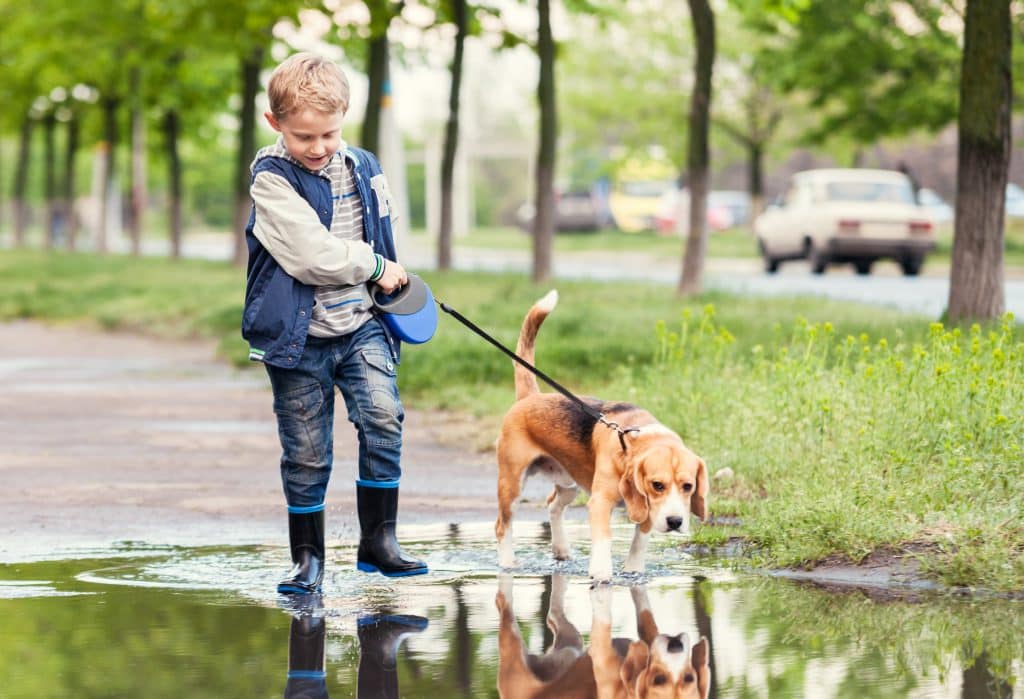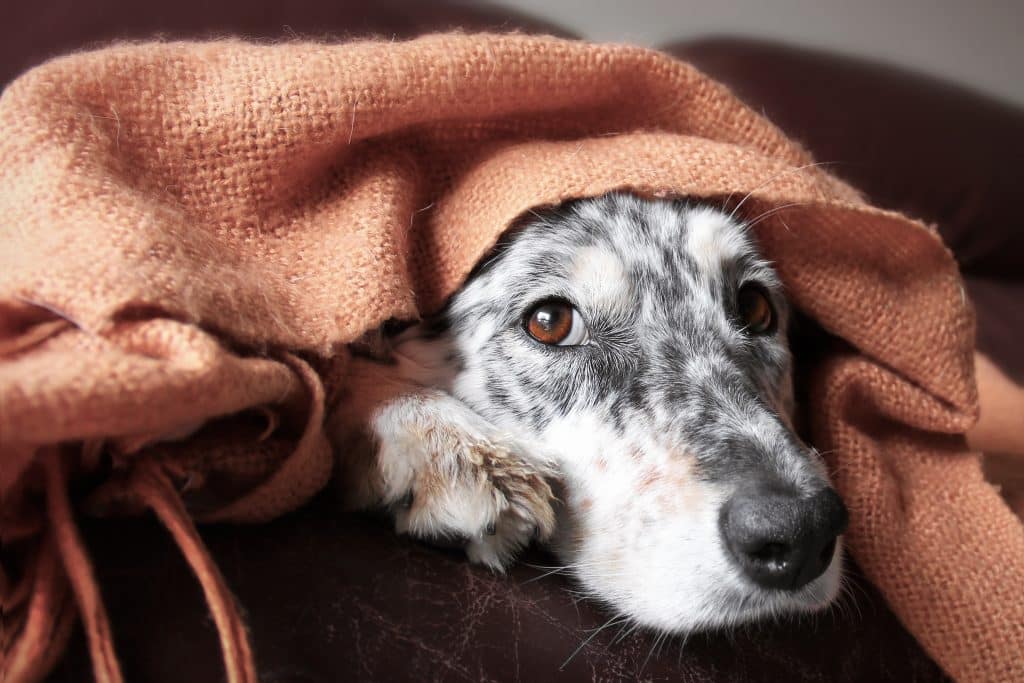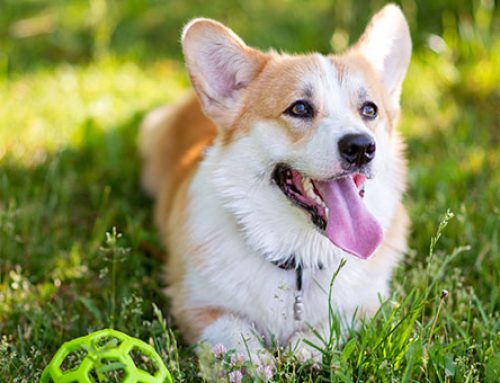Have you ever wondered what is lurking in the water puddle in your backyard as your dog happily splashes around? Truth is, there may have been other animals already happily splashing in that puddle earlier and they could of left behind some harmful bacteria.
WHAT IS LEPTOSPIROSIS?
Leptospirosis is an infectious disease that causes illness in dogs, other animals, and people throughout the US. The disease is caused by a bacteria that lives in water or warm, wet soil. Leptospirosis causes flu-like symptoms, but can develop into a more severe, life threatening illness that can affect the kidneys, liver, brain, lungs, and heart.
HOW DOES MY DOG BECOME INFECTED?
The most common way for a dog to become infected with leptospirosis is by coming in contact with the urine of infected animals, usually in water or on wet ground. Dogs become infected by swimming in or drinking contaminated water, or by playing in areas where infected urine is present.
The bacteria enters the body through the eyes, nose, mouth, or through a break in the skin caused by a cut or scratch. Once a dog has been infected, the bacteria reproduce and multiply, spreading to other parts of the body. If the infection reaches the kidneys and bladder, this dog will spread the bacteria each time it urinates.

WHAT ARE THE SIGNS OF LEPTOSPIROSIS?
Some dogs have no obvious symptoms. Early signs usually appear about a week after infection and may include fever, muscle weakness, and loss of appetite and energy. Other signs include yellowing of eyes and skin and blood in the urine. Vomiting and diarrhea may follow, causing dogs to become dehydrated. Call your veterinarian if you notice any of these symptoms.
IS MY DOG AT RISK?
Leptospirosis has been reported in the northwest, northeast, and upper midwest regions, in suburban and city settings.
Does your dog have access to wetland areas such as swamps, marshes, streams, lakes, rivers, drainage ditches, or sources of slow-moving or stagnant water?
Does your dog roam rural fields, woodlands, parks, or areas where wildlife such as deer, raccoons, opossums, skunks, or other animal may be present?
Does your dog live in an environment where they would be exposed to rodents or their urine?
Does your dog live in an area that experiences heavy rainfall or frequent flooding?
If you answered “yes” to any of these questions, your dog has a higher risk of infection.
HOW IS LEPTOSPIROSIS DIAGNOSED?
Leptospirosis can be difficult to recognize because it causes a variety of symptoms. Your veterinarian can diagnose the infection by testing your dog’s blood or urine. If your dog has been diagnosed with leptospirosis, you need to take precaution to protect yourself and other family members, as the infection can spread to people.
WHAT IF MY DOG BECOMES INFECTED?
Prompt medical treatment is critical. The standard treatment includes hospitalization with intravenous fluids and antibiotics, good nutrition and supportive care. If treatment is started early, most dogs can recover after 2 weeks. More than 80% of dogs with leptospirosis develop serious, short term kidney problems.

HOW CAN I PROTECT MY DOG?
You can try to lower your dog’s risk of leptospirosis by limiting exposure to potential sources of contamination (stagnant water, rodents and other wildlife). The best way to protect your dog is with annual vaccination that protects against leptospirosis. Currently vaccines are available to protect against the 4 most common types of leptospires.
IS VACCINATION SAFE?
Dogs have been vaccinated against leptospirosis for many years. Minor side effects may occur, but generally the vaccines are considered safe and well tolerated. Sometimes dogs experience tenderness or swelling at injection site that usually goes away very quickly.
Ask your veterinarian if you have further questions about leptospirosis or vaccination.















Leave A Comment